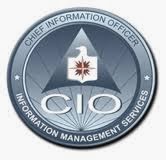Organizational Structure
- Organizational employees must work closely together to develop strategic initiatives that create competitive advantages.
- Ethics and security are two fundamental building blocks that organizations must base their businesses upon.
IT Roles And Responsibilities
- Information technology is a relatively new function area, having only been around formally for around 40 years.
- Recent IT-related strategic positions :
- Chief Information Officer (CIO)
- Chief Technology Officer (CTO)
- Chief Security Officer (CSO)
- Chief Privacy Officer (CPO)
- Chief Knowledge (CKO)
- Chief Information Officer (CIO)
- oversees all uses of IT and ensures the strategic alignment of IT with business goals and objectives
- Broad CIO functions include :
- Manager
- ensuring the delivery of all IT projects, on time and within budget.
- Leader
- ensuring the strategic vision of IT is in line with the strategic vision of the organization.
- Communicator
- building and maintaining strong executive relationships.
- If they have any problem involve IT personal, CIO that will solve it. (more effectiveness)
- Chief Technology Officer (CTO)
- responsible for ensuring the throughput, speed, accuracy, availability, and reliability of IT.
- effectiveness because make sure the system is efficient.
- Chief Security Officer (CSO)
- responsible for ensuring the security of IT systems.
- to make sure the system we do, no person can hack.
- Chief Privacy Officer (CPO)
- responsible for ensuring the ethical and legal use of information
- Chief Knowledge Office (CKO)
- responsible for collecting, maintaining, and distributing the organization's knowledge.
- Ethics
- the principles and standards that guide our behavior toward other people
- Privacy is major ethical issue
- privacy
- the right to be left alone when you want to be, to have control over your own personal possessions, and not to be observed without your consent.
- sometimes, we fell want to alone. don't want anyone bother
- we don't want someone to corrupt our business.
- Issues affected by technology advances
- intellectual property.
- intangible creative work that is embodied in physical form. for example, from idea to something we can hold.
- create new things. so, there is intellectual property, can touch.
- things that comes from a creative idea.
- such as architects, building that we can touch.
- copyright
- the legal protection afforded an expression of an idea, such as a song, video, game, and some types of proprietary documents.
- fair use doctrine
- in certain situations, it is legal to use copyrighted materials. for example song from oversea to Malaysia.
- pirated software
- the unauthorized use, duplication, distribution, or sale of copyrighted software. more cheap and free.
- counterfeit software
- software that is manufactured to look like the real thing and sold as such. for example, buy antivirus, notify original but not original.
- One of the main ingredients in trust is privacy. the system is effective because customer will be satisfied but efficiency because the system can be slow.
- Security
- organizational information is intellectual capital - it must be protected.
- Information security
- the protection of information from accidental or intentional misuse by persons inside or outside an organization.
- the CSO who save the information.
- E-business automatically creates tremendous information security risks for organizations.








No comments:
Post a Comment